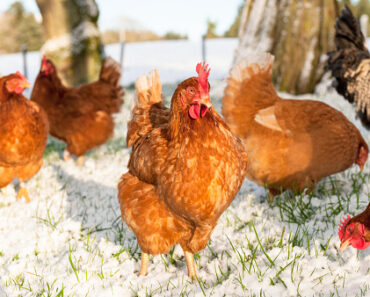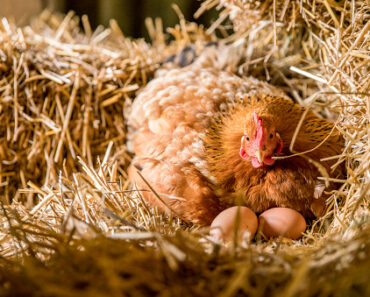
It is not easy to distinguish the sex from the inseparable ones because they do not have external organs. If you want to know the sex of your birds in a reliable way you can ask for a DNA research from your veterinarian or a specialized laboratory. The other method is to locate the gap of the pelvic bones which are further apart in the female and closer together in the male, but this technique is not very reliable depending on the species. Make sure that you have inseparable individuals of the same age. Indeed if you put a young and an old inseparable together there is a high risk that they will kill each other. There are several species of lovebirds: the pink-faces, the masked and the Fischer’s lovebirds which are the most adapted species for beginners. There are also the Abyssinian, Liberian, black-necked, black-cheeked, gray headed, red headed and Liliane finches. They are all more beautiful than each other with magnificent flamboyant colors.
The behavior of the lovebirds
These birds have many habits in their behavior that you will need to know and observe to fully understand them. Through these behaviors you will analyze the mood and the way of expression of your birds, so you will detect a possible abnormality or disease.
Lovebirds are very agile and lively birds that love to fly and climb. They are large acrobats with powerful legs. They also use their beaks to climb and move along the cage fence. They are more skillful in moving around and on the ground but they still walk easily on the ground in search of food.
The inseparable likes to stretch, it extends a leg and stretches its wing at the same time and on the same side, going backwards and downwards. It usually stretches after a period of inactivity or rest. These birds also spread their wings without spreading them out to cool down when it is hot. It is frequent that after stretching the legs, the bird brings them back towards the abdomen by tucking them into the feathers.
The inseparable sometimes stand on only one leg. This is a sign of appeasement and shows that they feel safe. You will observe the lovebird standing on one leg hiding its beak in the feathers on its back. The bird often adopts this position when sleeping or resting. If the bird takes this position but is standing on both legs it is a sign that it is sick, so you will have to be alerted in this case.
From time to time the inseparable yawn with a wide beak. If your lovebirds yawn too frequently it means that the air in the house is saturated and that the room needs to be ventilated.
Finches need to sharpen their beaks on tree branches or a hard surface. This is also a way to greet their partner or fellow creatures.
These birds spend a lot of time grooming their beautiful plumage; they spend several hours a day doing this. They smooth each feather one by one with their beak to remove dust and dirt. By this action they lubricate their feathers by taking a substance from the uropygial gland. Since they cannot reach their heads with their beaks, they clean them with their paws or by rubbing them. When you observe the couple of inseparable ones grooming each other it is a sign of a strengthening of their mutual attachment. The cleaning of the legs is done with the beak as for the feathers. At the end of the grooming, the bird shakes to put its feathers back in place. If the animal has been afraid or anxious, it can shake in the same way, it is a sign that everything is better.
Feeding the lovebirds
To keep your lovebirds in good health, you must provide them with a varied diet. You will find in pet stores seed mixes that are the basis of the food of your lovebirds. Fruits and vegetables are added to this to strengthen the body’s resistance and promote growth by providing vitamins. As for vegetables, lovebirds like chard and spinach leaves. You can also give dandelion and watercress leaves. From time to time give some carrots cut into slices or cubes. For fruit it is advisable to give freshly cut apple quarters daily. Lovebirds also like pears.
From time to time, in winter, you can give them dates and figs. When you provide fruits and vegetables to your birds you must make sure to wash them, serve them at room temperature, and remove them in the evening if they are not eaten. Lovebirds need a supply of minerals. It is essential to provide them with cuttlefish bone, which is a very good phosphorus and calcium supplement. To help digestion you can also give a mixture of crushed shellfish. You can easily find some in pet stores. To hydrate your birds, tap water is perfectly suitable. It must be changed every day. Lastly, if you make reproduce your inseparable ones it is necessary to give an additional complement of proteins. In the shops you will find bird food that you can use for this purpose. You can also give germinated seeds.
The necessary habitat for the inseparable birds
When choosing a cage for your lovebirds, think of them as agile and acrobatic animals. It is therefore not recommended to take a small bell type cage. Prefer large cages, square or rectangular shape. Place your cage away from the sun and drafts. The space is important, it increases according to the number of pairs of inseparable birds you have.
The cage must provide some equipment for the birds’ well-being. Install perches of different diameters to avoid health problems related to osteoarthritis by clamping the legs on a permanent support with the same spacing. A minimum of one perch per bird is required but the ideal is to put more at different heights. Add a few fresh, untreated tree branches. The lovebirds will sharpen their beaks by gnawing on the branches. On the floor of the cage you will place absorbent paper which will make maintenance easier and maintain good hygiene in the cage. Do not use plant litter as the animal may ingest it and become intoxicated. Lock your cage door securely. Lovebirds are so clever and intelligent that they often manage to open the door and escape. Install all kinds of toys to stimulate your lovebirds who are curious and playful. Choose toys that are sturdy and adapted to the size of your birds. You can use bells, swings, mirrors and rings. Provide a nesting box for your lovebirds to rest in. To feed them they will need a feeder, a fruit holder and a watering trough. Lovebirds like to bathe, so provide them with a bathtub. Maintain the hygiene of the cage, a little every day, especially with regard to water and food. Clean the cage and accessories weekly with hot water and disinfectant.
Take care of the inseparable and care for them
The lovebirds like to be quiet but they also enjoy your company. You can pet them, talk to them and do your activities in front of them without disturbing them with loud and stressful noises. Lovebirds are easy to tame, you can even teach them a few simple words. You should never rush a lovebird, they have a great memory and will remember it for the rest of their lives. Afterwards, they may be fearful or even aggressive. If you observe a sign of disease in relation to the behavior of your bird you must call a veterinarian as soon as possible. You will have to regularly monitor the beak and nails of the animal. In case of an abnormally long beak you can cut off the excess with a nail scissors or ask for the intervention of your veterinarian. For the nails the operation is more delicate because it is necessary to be careful not to touch the blood vessel of the claw, but you can do it yourself if you feel able. At the level of the legs of the inseparable, scales can sometimes appear. There are special creams to treat this problem simply.
You will have to regularly treat the plumage of your lovebirds with a specific anti-parasite product.






